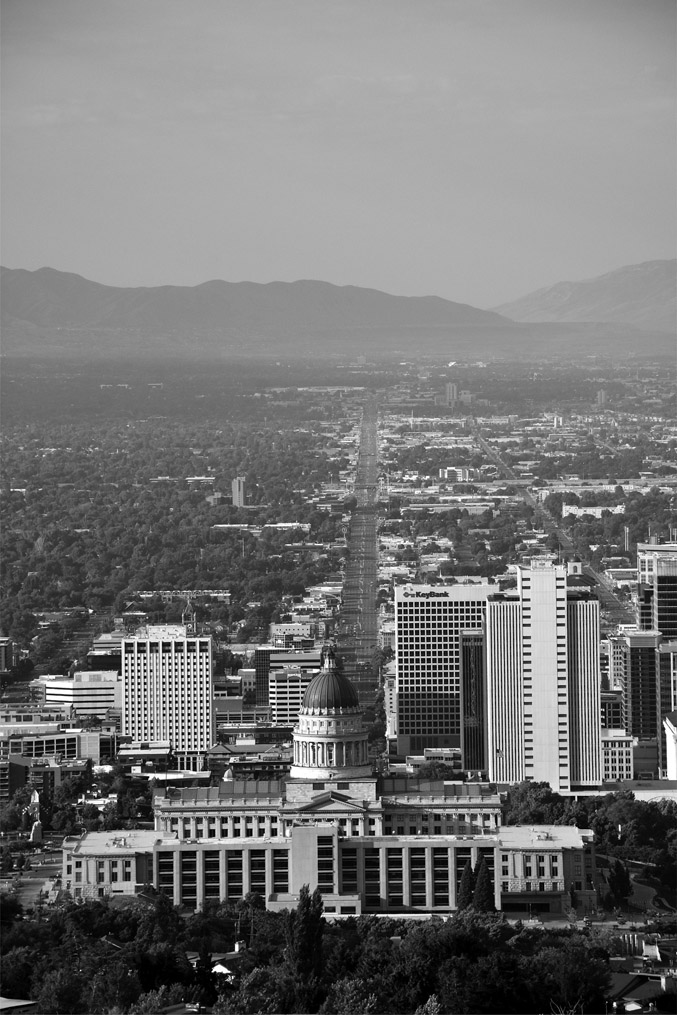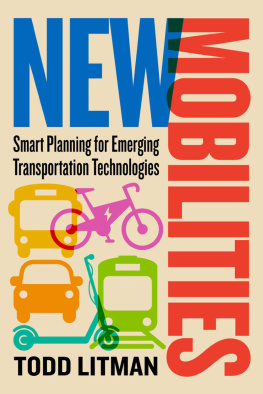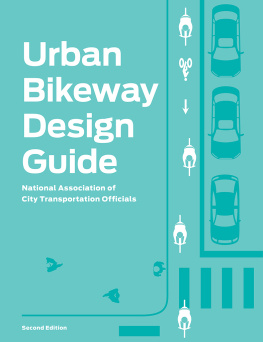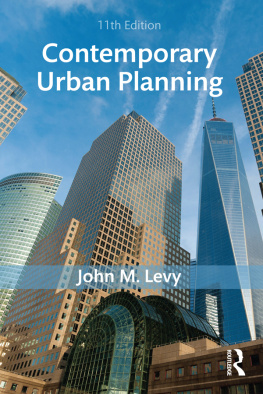State Street, Salt Lake City, ca. 1907.
Used by permission, Utah State Historical Society.
At some point during this history, the boundaries of each of the two cities and all of the other jurisdictions between became much less important to peoples daily lives. Whereas in earlier times, people might go for days or weeks without crossing their home citys boundaries, now they were crossing those boundaries daily, frequently several times a day. In the last year of the 20th century, intra-urban passenger rail began returning to the region after a half-century hiatus. By 2013, approximately 150 miles of light rail, heavy rail, and streetcar service helped tie together a vast interconnected and integrated landscape of 1,600 square miles and 1.8 million souls.

Figure 1.2 State Street, Salt Lake City, 2017.
Photo: Keith Bartholomew.
The history of this one region mirrors the history of urban places all across America, and indeed across the globe. In the span of approximately one and a half centuries, our urban places have shifted from very localized nodes of semi-independent communities to expansive territories of interdependent conglomerations that function as webs of social and economic interaction. As Nelson and Lang note, Cities are defined by their spatially integrated functions, not by their political boundaries. The suburbs and even exurbs of a city are elements of the city writ large (2011, p. 1). In the shifts from mono-centric urban forms to poly-centric regions to edgeless cities, noted by Lang (2003), urban areas have become increasingly characterized by multidimensional overlapping networks of social, cultural, and economic ties that knit together people and institutions in ways that make only passing acknowledgment of municipal jurisdictional boundaries. Urban regions are the new uber-networks.
Economically, metro regions are, overwhelmingly, the source of Americas wealth. Katz and Bradley (2013) report that the nations 100 largest metro areas generate 75 percent of U.S. GDP. This prosperity comes not from an aggregation of a multitude of municipally based individual economies, but from regions operating as integrated systems. Indeed, metro regions appear to be eclipsing other geographic units including states and nation-states in economic importance. Referencing Kenichi Ohmaes The End of the Nation State , Dan Kemmis notes that more organic entities such as continents, city-regions, and coherent subcontinental regions are rapidly emerging as considerably more relevant economic entities than states, provinces, and nations (2001, p. 73). This is leading to what some refer to as an inversion of the traditional top-down federal-state-local hierarchy to a new power structure that places metro areas at the top.
The importance of the regional unit is demonstrated even more dramatically through ecological imperatives. Nothing in nature respects the political boundaries created by humans. Wildlife, air and the things that pollute it, vegetation, and the movement of water all operate according to forces that are independent of jurisdiction and government (though governments frequently take massive actions to influence these forces). In fact, it was the inadequacy of state boundaries to address the trans-boundary nature of watersheds that was a primary motivation for convening the U.S. Constitutional Convention in 1787.
Regions hang together through social institutions as well. As Calthorpe and Fulton (2001) note, cultural organizations, such as opera and ballet companies, sports facilities, religious temples and cathedrals, universities, and hospitals all operate through and for region-level populations, not just those of the municipality in which they are located. And increasingly, these institutions are not only located in central cities. In the Salt Lake area, the arena for the regions NBA franchise is in Salt Lake City, but the Major League Soccer team is in Sandy, and the hockey team is in West Valley City. Together, institutions create webs of interactions that further cement the idea of a region-scale sense of place. We might reference our individual neighborhoods or suburban towns when speaking to someone else from the same region. But when we travel nationally or internationally, we tell people that we live in San Francisco, or Seattle, or Chicago, or Salt Lake City, meaning not that we necessarily live within those municipalities, but that we come from those metro regions. In other words, we conceptualize home as a regional thing. As David Rusk has observed, the real city is the total metropolitan area city and suburb (1993, p. 5) the two are inseparable in cultural as well as functional terms.









